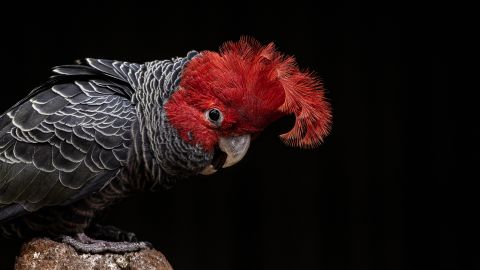Australia commits to zero extinctions with new plan to protect 30% of land | CNN

CNN
—
Australia, which has one of the world’s worst records on extinctions, on Tuesday announced a 10-year plan to prevent any more species from dying out in the country by protecting its most threatened plants and animals.
Launching the plan at Taronga Zoo in Sydney, Australia’s Minister for the Environment and Water Tanya Plibersek said the Labor government had a “very ambitious target” to conserve more than 30% of Australia’s land mass by 2030.
“We’re talking about an extra 50 million hectares (about 124,000 acres) of landscape that we need to find and to manage in a way that protects the landscape and the species that depend on it,” Plibersek said.
The plan brings Australia into line with more than 100 other countries, including the United States, which have pledged to protect 30% of their land and 30% of their ocean by 2030. The initial coalition of countries announced their commitment ahead of the One Planet summit in 2021.
In recent years, Australia’s wildlife has suffered due to natural disasters, land clearing, feral predators and the effects of the climate crisis, including the “Black Summer” fires that tore across southern states in 2019-20, killing or displacing nearly 3 billion animals, according to estimates from the World Wide Fund for Nature (WWF).
The fires contributed to the bleak outlook for Australian biodiversity detailed in the State of the Environment 2021 report. Belatedly released this July, the report found that Australia had lost more mammal species than any other continent and “continues to have one of the highest rates of species decline among countries in the Organisation for Economic Co-operation and Development.”
The previous Coalition government had opted not to release the report ahead of the federal election in May, with some speculating that its contents were so alarming that the government worried it could cost them votes. They lost the election anyway, which saw a higher number of environmental advocates win seats across the country.

The new plan identifies 20 places and 110 species that will become the focus of conservation efforts.
The government says the priority species were selected based on several factors, including their uniqueness and risk of extinction, while the priority places represent a “broad range of Australian landscapes and ecosystems.” The areas include the forests of Far North Queensland, Kakadu National Park in the Northern Territory, and Kangaroo Island in South Australia.
“By focusing in on these species and these places, we have the biggest chance of success,” Plibersek said.
The World Wildlife Fund Australia’s Chief Conservation Officer, Rachel Lowry, applauded the government’s commitment to Australia’s threatened species but said the plan should go further.

“Australia has more than 1,900 listed threatened species. This plan picks 110 winners. It’s unclear how it will help our other ‘non priority’ threatened species such as our endangered greater glider for example,” Lowry said in a statement.
The Australian Conservation Foundation’s nature program manager, Basha Stasak, said “stopping the destruction of wildlife habitat is the key” to achieving the government’s goal of no new extinctions.
Stasak added that the government’s plan is “ambitious but essential if future generations of Australians are to see animals like koalas, mountain pygmy possums, greater gliders and gang-gang cockatoos,” all of which are listed as endangered or vulnerable species.
The plan also includes continued emphasis on “actions that can most benefit threatened species,” such as minimizing the impact of threats like feral cats and foxes, getting the community involved in and leading recovery efforts, and helping priority species adapt to climate change so they ultimately become more resilient.
Feral predators introduced by settlers during colonization have multiplied and played an outsized role in Australia’s environmental degradation.
A recent study published in the journal Diversity and Distributions estimated that foxes and cats kill almost 700 million reptiles, 510 million birds and 1.4 billion mammals every year in Australia.







